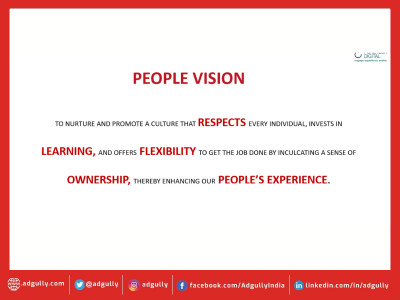How to use Design Thinking to improve Digital Marketing
Design thinking is all the rage at the moment. Prashant Deorah, MD & CEO, Puretech Digital, decodes how brands can use it to improve their digital marketing strategy.
“It’s really hard to design products by focus groups. A lot of times, people don’t know what they want until you show it to them,” Steve Jobs had said. Design thinking is partially about that, or as Wikipedia states: “Designers approach users with the goal of understanding their wants and needs, what might make their life easier and more enjoyable and how technology can be useful for them. Empathetic design transcends physical ergonomics to include understanding the psychological and emotional needs of people — the way they do things, why and how they think and feel about the world, and what is meaningful to them.”
So, what’s that got to do with marketing? A lot actually, but first, let’s have a look at how design thinking can be summarized.
What is Design Thinking?
Coe Leta Stafford, Managing Director of IDEO U, says: “Design thinking is a process for creative problem-solving.” Career Foundry, on the other hand, stipulates that: “Design thinking is both an ideology and a process, concerned with solving complex problems in a highly user-centric way.”
Wikipedia concludes that: “Design thinking refers to the cognitive, strategic and practical processes by which design concepts (proposals for new products, buildings, machines, etc.) are developed by designers and/or design teams. …Design thinking encompasses processes such as context analysis, problem finding and framing, ideation and solution-generating, creative thinking, sketching and drawing, modelling and prototyping, testing and evaluating.”
In short, design thinking is a creative and practical process, by which people aim to find a solution to a problem. Often there isn’t a well-defined problem or no apparent problem at all, such as when looking for ideas to innovate new products – you have to find the problem. Some people like to refer to these ill-defined or tricky problems as “wicked problems”.
Using Design Thinking for Digital Marketing
According to the Hasso-Plattner-Institute of Design at Stanford, design thinking can be broken down into five phases: empathise, define, ideate, prototype and test. The same phases can be used when creating an online marketing strategy.
Empathise
Empathising with your client base means finding out what drives their psychological and emotional urges. When you do market research, it’s easy to get stuck with numbers. Big has become a thing, so finding data isn’t as hard as it used to be. In fact, you might find yourself lost in the numbers you find.
That’s great, actually. You have access to data. But how do you use that data? How do you interpret it? This is when you need to empathise. What are your potential customers feeling? What drives them? You may know what kind of books/ blogs they’re reading, or what types of videos they’re watching on YouTube, but what does that mean? What are the emotional and psychological drives that make them read those books/ blogs and watch that kind of videos? And if they spend more time on Pinterest than on Twitter, what does that mean? What emotional need does Pinterest satisfy that Twitter does not?
As a marketer, you’re no longer just selling a product. Online, you’re selling content that leads to people engaging on social media, which in turn, leads to their interest and faith in your product.
Define
Once you’ve figured out who your customers are and how they think and feel, you need to define the problem. For example: “Working moms in Los Angeles are frustrated by long and complicated pieces about motherhood as they don’t have time for them. Yet they want to learn as much as possible about motherhood and the shorter pieces are often not well-researched, nor very informative.” Or: “CMOs in the Bay Area have a problem finding marketing strategies that are as innovative and meticulous as their employers.”
In short, you need to figure out what kind of online content will solve their problem(s). CMOs in San Francisco will have different problems from working moms in Los Angeles. Of course, you can also dig deeper to find more problems. The working moms may, more specifically, want to solve problems like ensuring quick and healthy meals for babies, workout regimes for busy moms that are actually statistically proven to work, etc. These can all be used for content ideas.
Social media is usually used to inform or entertain, and once you’ve empathised with your target market, you’ll be better equipped to figure out what specifically informs, or entertains them (or rather: what problems they’re having being informed and entertained at the moment).
Ideate
Now that you know the problem(s), you can think of one, or many, solutions. For example, the working moms in Los Angeles may be looking for short (>2min) and entertaining pieces that help them become better mothers, while the CMOs in San Francisco want to find ways of coming up with innovative marketing strategies that have a statistical back-up.
Basically, this is when you come up with content ideas that would solve the problems of your target audience, be it to inform or entertain them better.
Prototype
This is when you design some different content pieces. For the moms in LA, you could create a video, blog; podcast and infographic that help them solve a problem.
Testing
This is when you test the content. You can do A/B testing and try out various different approaches, such as videos, blogs, infographics, etc. Feedback will then allow you to adjust the content you’re creating. If you defined two to three different problems for your audience, you should examine what resonates most. Maybe one problem appears to be more prominent than another, depending on how people react to the content.
In Closing
Design thinking is a creative, yet practical, process that can be applied to solve pretty much anything. This includes digital marketing, as you aim to solve your target market’s problems by providing them with content. Of course, if you’re directly selling the product, you can apply the same process, only now you need to figure out how to present the product so that it solves the problem(s) of your target market.
Sources: Wikipedia, IDEO U, Career Foundry
















Share
Facebook
YouTube
Tweet
Twitter
LinkedIn